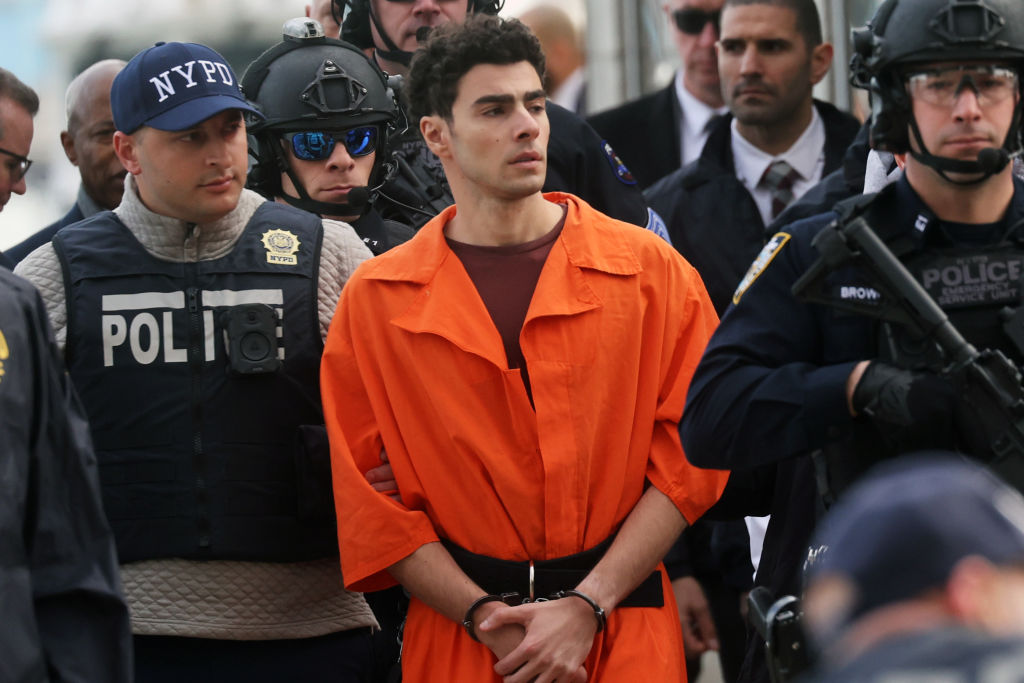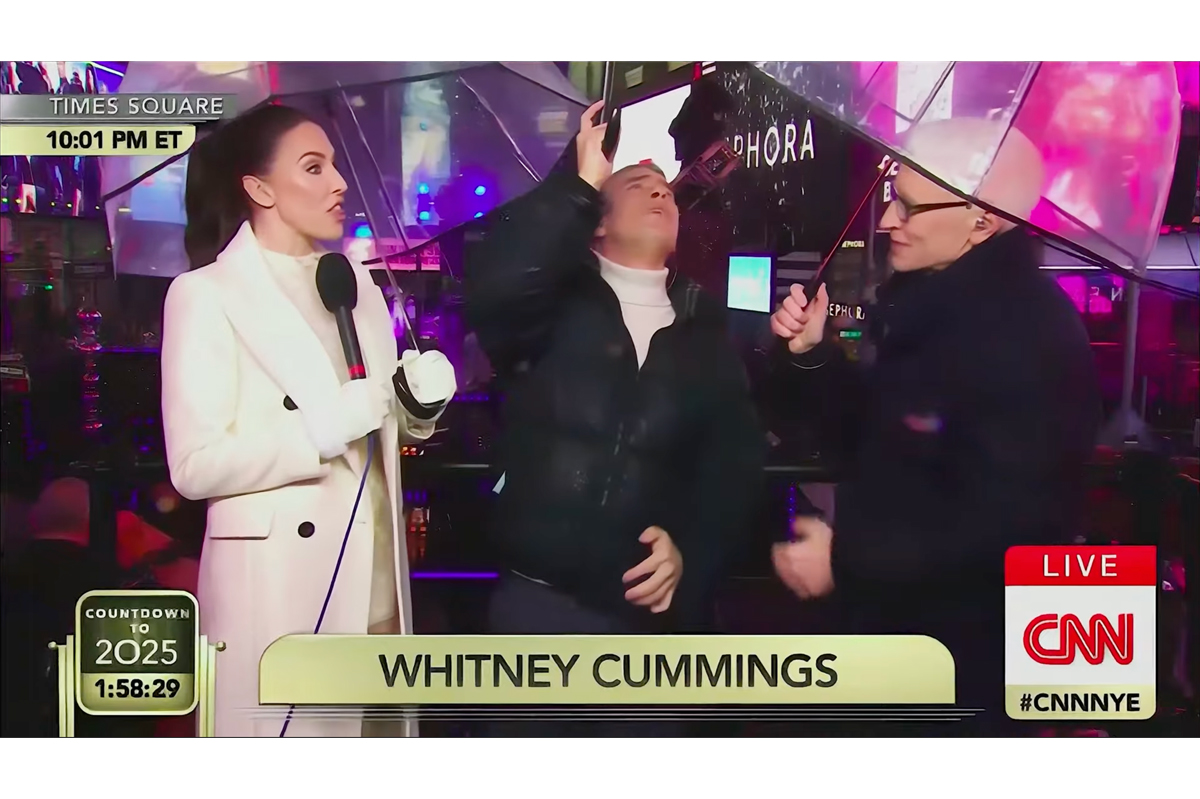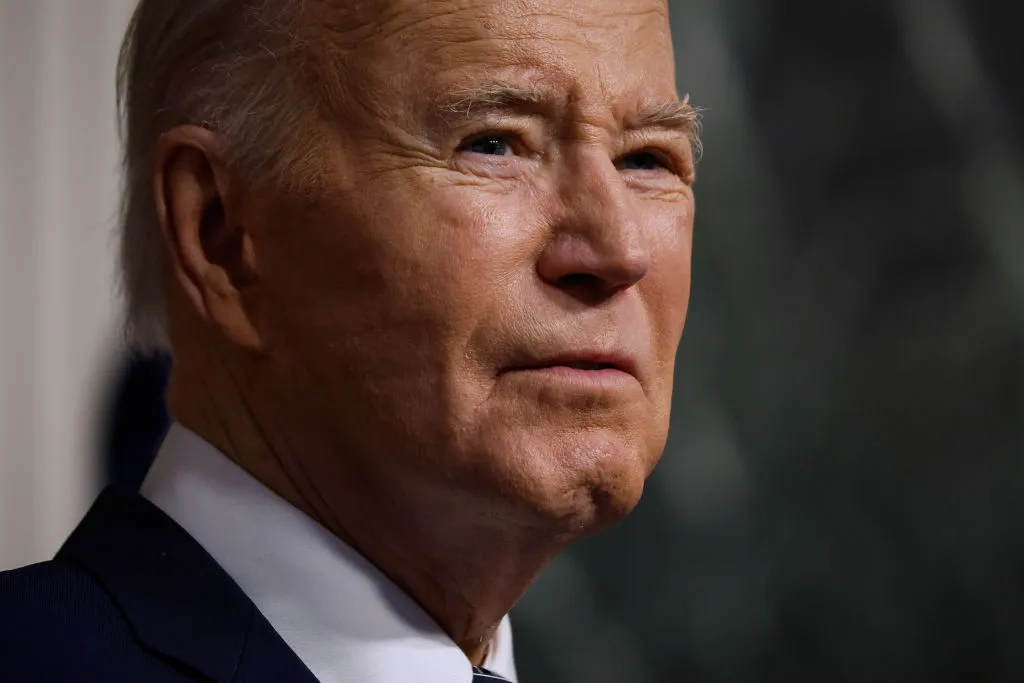Brian Thompson, CEO of UnitedHealthcare, was gunned down by Luigi Mangione in New York City on December 4. Surveillance footage hit the internet within hours. Wild speculation spread about the strange gun in the killer’s hands. The elongated barrel, the chamber movements that signaled repeated gun jams, the lack of recoil. Was it a veterinary euthanasia gun?
As it turned out, it was a homemade gun, commonly known as a “ghost gun,” printed using 3D technology. And, as the furore over Mangione dies down, it’s his weapon that remains the subject of violent disagreement and debate. Two months before Thompson’s assassination, the Supreme Court heard oral arguments in the great ongoing ghost gun case — Garland v. VanDerStok.
Jennifer VanDerStok, the named plaintiff, is a former police officer who thinks that the Bureau of Alcohol, Tobacco, Firearms and Explosives (ATF) overstepped its authority under the Gun Control Act of 1968 when it labeled ghost-gun kits as firearms. It may sound like a strange battle to fight, especially in the aftermath of the Mangione killing, but for VanDerStok it’s one that will determine how free American citizens remain.
“A look at history has shown that violations of both civil liberties and human rights happen to people who have first been disarmed,” she says. “And we’re seeing that in nations where disarmament has already happened.
“It’s vital that Americans retain their right to keep and bear firearms.”
The case has been described as a bid by gun companies to stay in business, but VanDerStok insists she’s just an “American patriot,” motivated by the conviction that people must retain their arms if they’re to retain power. Bill Sack, director of legal operations for the Second Amendment Foundation, agrees. “The ATF does not have the authority to write laws,” he told The Spectator.
“Our argument against the Biden ATF’s rule-making which redefined ‘firearm’ is simple: it exceeds the authority of the ATF by inserting words into the definition of firearm that Congress didn’t put there.”
The Second Amendment isn’t absolute. It allows for regulations on commercial sales and prohibits felons from possessing firearms. But do restrictions on homemade firearms put undue pressure on this fundamental right, or are they reasonable regulations for public safety? The Court must decide.
Ghost guns sound sinister, but to an extent they’re just the modern face of an old tradition. Private gunmaking is deeply rooted in American history. From the earliest colonial settlements, gunsmiths were essential members of frontier communities, crafting and maintaining the firearms necessary for survival and self-defense. During the Revolutionary War, when British authorities attempted to choke off the colonies’ access to arms and ammunition, these skilled craftsmen were at the heart of the independence movement.
Professor Timothy Lytton at Georgia State University College of Law provides crucial context: “US restrictions on firearms govern only firearms but not firearm parts,” he says. “The ATF is the federal agency responsible for administering restrictions on the sale of firearms.” This distinction between finished firearms and their components has historically allowed Americans to maintain their gunmaking traditions while enabling reasonable regulation of commercial sales.
Today’s ghost-gun manufacturers have moved a long way from the colonial era. Advanced manufacturing techniques, particularly 3D printing and computerized milling, have democratized firearm production in unprecedented ways. What once required significant skill and specialized equipment can now be accomplished with consumer-grade technology and downloadable files.
The government contends this new reality and the ease with which a ghost gun can be made demands updated interpretations of existing law. During oral debate, former solicitor general Elizabeth Prelogar argued that weapon-kits clearly fall under the Gun Control Act’s purview: “It’s hard for me to see how a weapon parts kit doesn’t fit within that plain language because quite literally the kit is intended and designed to produce that functioning weapon.” The Biden administration’s 2022 rule attempted to address this by requiring ghost-gun kits to carry serial numbers and subjecting their sales to background checks.
But is there any real need to panic about ghost guns? ATF statistics do show a dramatic 1,083 percent increase in ghost gun recoveries from 2017 to 2021. However, this striking percentage obscures an important detail: ghost guns still represented less than 2 percent of the 1.9 million crime guns traced during that period. Traditional serialized handguns, not ghost guns, remain overwhelmingly the most common type of fire- arm recovered in crimes. Glock alone manufactured nearly 20 percent of traced pistols, while 9mm calibers — the type of weapon that killed Thompson — accounted for almost half of all traced handguns. Between 2017 and 2021, the ATF was able to determine the purchaser in 77 percent of the 1.9 million requested crime-gun traces.
Even in California, which accounted for an estimated 55 percent of all privately made firearms recovered nationally between 2017 and 2021, the numbers remain relatively small. It’s worth noting that the last quarter of 2023 saw the lowest number of ghost guns recovered as crime guns in California (1,705) since the second quarter of 2020.
Peter Jensen-Haxel, writing in the Golden Gate University Law Review, argued that 3D printing technology strengthens Second Amendment protections by making traditional regulatory barriers ineffective at blocking citizens’ access to arms. Jensen-Haxel’s argument goes beyond mere technological determinism. He suggests that 3D printing technology tips the balance of power in the right direction, giving citizens new autonomy even as state con- trol grows. He contends that this technological democratization of manufacturing capability reinforces the Second Amendment’s original intent by ensuring that citizens retain the right to bear arms and the means to produce them. Jennifer VanDerStok would agree, as would many millions of other patriotic Americans.
The Court’s decision, expected during the spring term, will help write the next chapter in America’s ongoing effort to reconcile individual rights with collective security. When the inevitable Luigi Mangione media circus reconvenes, it’s his ghost gun that should be center stage.
This article was originally published in The Spectator’s March 2025 World edition.


























Leave a Reply